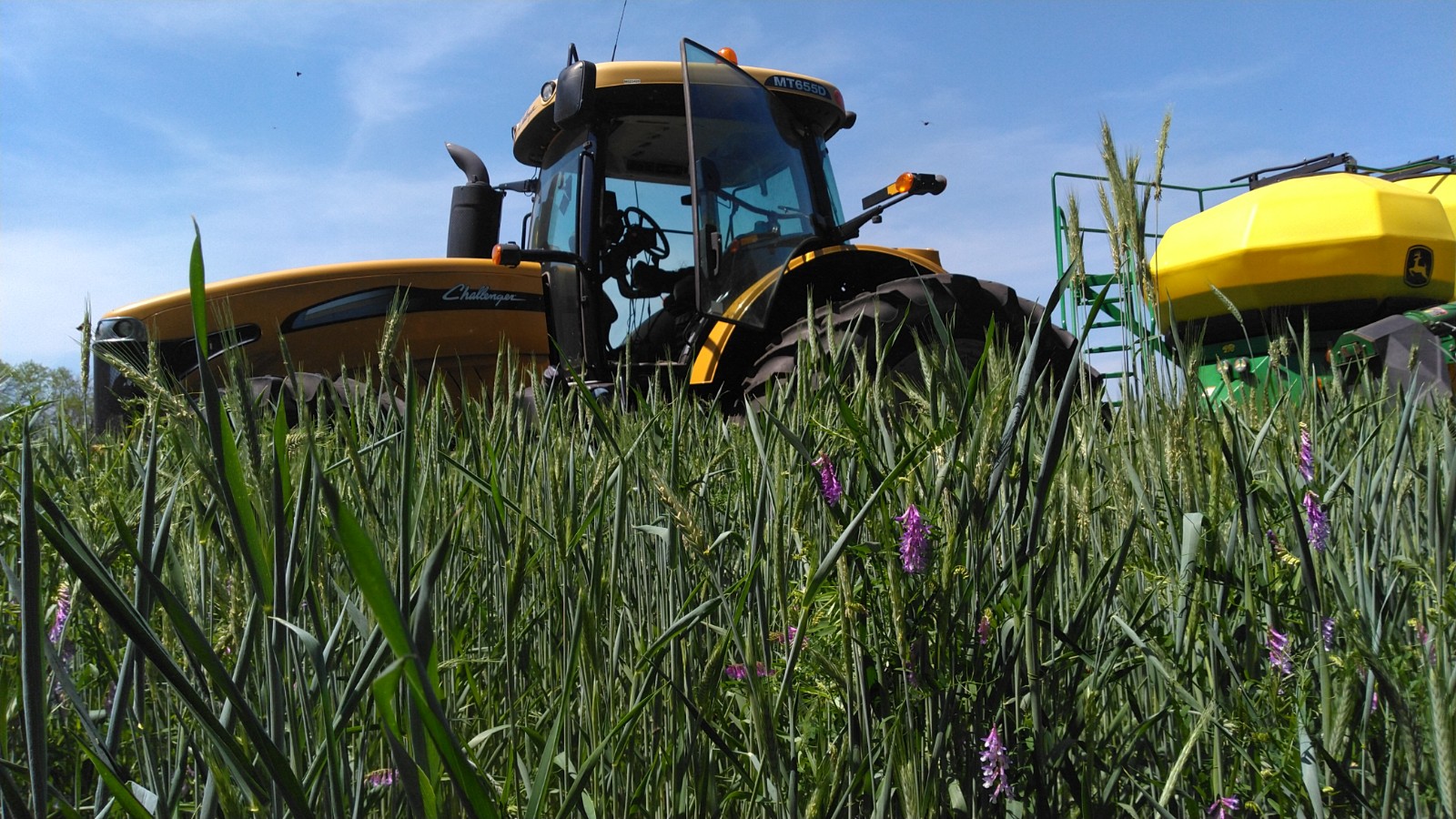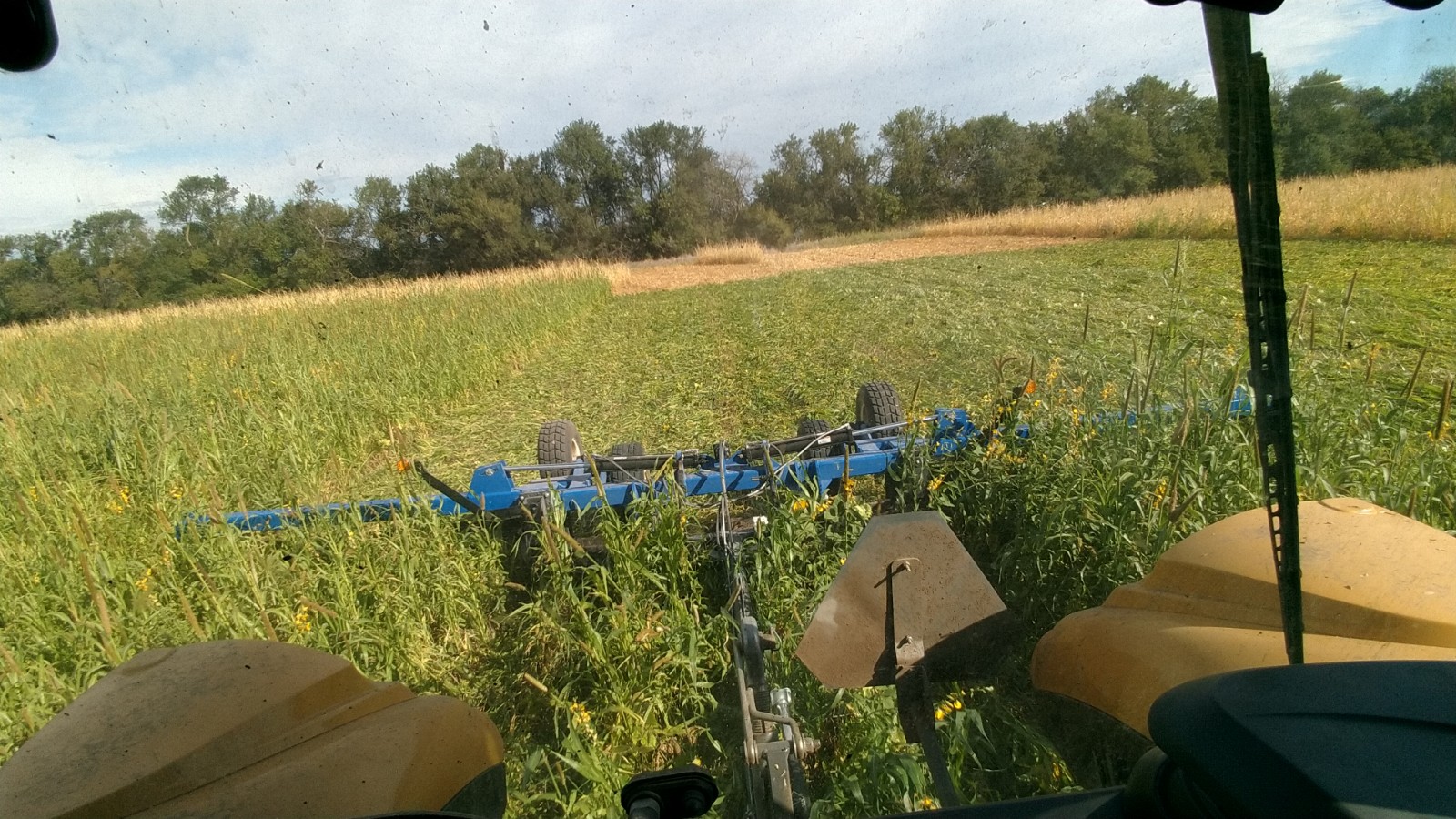
Sam Carlson Farm

Located ten miles north of Lindsborg, Kansas in the state’s central wheat belt, Sam Carlson is a fifth generation farmer growing wheat, soybeans, milo, oats, and triticale on about 1250 acres where the average annual rainfall is 21 inches and the effective growing season is 246 days. The Carlsons regenerative journey began in 2019 after attending a no-till conference, and today they are 100% no-till, utilize a diverse mix of cover crops, and are significantly reducing chemical inputs to increase soil health and natural resilience on their farm.
Product Types
Operation Highlights



Region Conditions:
Central Kansas
Kansas has a continental climate with hot summers and cold winters. The state experiences moderate precipitation, with thunderstorms and tornadoes occurring frequently during the spring and summer months. Kansas’ flat topography and fertile soils support extensive agriculture, particularly wheat, corn, and sorghum production. The state’s central location in the United States has historically made it a crossroads for transportation and commerce.



The Principals of Soil Health at Sam Carlson Farm
Nurturing the soil is the foundation of regenerative agriculture. At Regenified, we measure the implementation of all six soil health principles because they are essential for regeneration. Each principle contributes to the soil’s overall health, creating a system greater than the sum of its parts.


Right Context
100% of crops grown are appropriate for region

Right Context
Farmers prioritize growing plants and animals suited to their specific environment. By understanding their unique context, they can optimize production while minimizing external inputs.


Minimized Disturbance
100% no-till on all crop acres

Minimized Disturbance
Rather than tilling or using chemicals that disrupt soil structure and microbial life, regenerative farmers embrace no-till practices and minimize chemical inputs to preserve the integrity of the soil.


Soil Armor
70% of soil is covered by diverse crops.

Soil Armor
Keeping the soil covered with organic matter such as cover crops or crop residues prevents erosion, improves water infiltration and retention while also providing habitat for beneficial organisms.


Enhanced Diversity
Warm and cool season diversity in crop rotation and cover crops

Enhanced Diversity
Maximizing diversity within both plant species and beneficial organisms above and below ground enhances ecosystem resilience and promotes natural pest control.


Living Root
94% of operations maintain living roots over the effective growing season.

Living Root
Maintaining living roots in the soil at all times ensures continuous nutrient cycling by supporting microbial activity crucial for healthy soils.


Animal Integration
Adding livestock would drive gains in ecosystem outcomes

Animal Integration
Integrating livestock into farming systems allows for the symbiotic relationship between animals and the land. Their grazing patterns contribute to nutrient cycling and improve soil fertility.
A Word From the Farm



Ecosystem Outcomes
Ecosystem processes are the interconnected systems that drive the health and resilience of our land and water resources. Good land management positively impacts those ecosystem processes. Our Verification Standard evaluates these vital processes, ensuring the regeneration of the ecosystem.
Sam Carlson Farm - Gallery
See how we’re changing the world, acre by acre.
Our Certification











